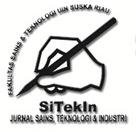Electric Vehicle Deployment and Sustainable Corporate Practices: Evaluating the Mediating Effect of Climate Change Awareness
Abstract
The adoption of electric vehicles (EVs) and the management of climate change risks are critical considerations for enhancing corporate sustainability. This study delves into the intricate relationship between EV usage, climate change risk, and corporate sustainability within the context of Micro, Small, and Medium Enterprises (MSMEs) in Bali Province. Through the formulation of hypotheses, this research aims to scrutinize the impact of EVs on corporate sustainability and assess the mediating role of climate change risk. Data were meticulously gathered from a sample of 180 MSMEs, providing insights into their sustainability practices and perceptions. The findings reveal a noteworthy positive association between EV usage and corporate sustainability, signifying the potential of EV adoption as a catalyst for sustainable business practices. Conversely, climate change risk emerged as a significant detractor, exerting a negative influence on corporate sustainability, both directly and indirectly through its interaction with EVs. These results underscore the pivotal role of EV integration in corporate sustainability strategies, while also emphasizing the imperative for proactive measures to mitigate climate change risks. However, the complexity of these relationships suggests the need for further research endeavors to unravel the underlying mechanisms and nuances. By advancing our understanding of these dynamics, future research can offer valuable insights to inform strategic decision-making and policy development aimed at fostering sustainable business practices amidst the challenges of climate change.
Full Text:
PDFReferences
Al Qodri, M. I., & Widyastutik. (2023). Emisi Energi Dan Kebijakan Kendaraan Listrik: Studi Komparasi Antara China Dan Indonesia. RISALAH KEBIJAKAN PERTANIAN DAN LINGKUNGAN Rumusan Kajian Strategis Bidang Pertanian Dan Lingkungan, 10(3), 133–144. https://doi.org/10.29244/jkebijakan.v10i3.48350
Aprili, A. N., Muhammad Sadat, A., Kresnamurti Rivai, A. P., & Negeri Jakarta, U. (2023). Studi Eksplorasi Minat Beli Mobil Listrik pada Generasi Milenial. Journal of Business Application, 2(2), 139–158.
Audrey Ramadhina, & Fatma Ulfatun Najicha. (2022). Regulasi Kendaraan Listrik di Indonesia Sebagai Upaya Pengurangan Emisi Gas. Jurnal Hukum To-Ra : Hukum Untuk Mengatur Dan Melindungi Masyarakat, 8(2), 201–208. https://doi.org/10.55809/tora.v8i2.126
Cadd, H., Williams, A. N., Saktura, W. M., Cohen, T. J., Mooney, S. D., He, C., Otto‐Bliesner, B., & Turney, C. S. M. (2024). Last Glacial Maximum cooling induced positive moisture balance and maintained stable human populations in Australia. Communications Earth and Environment, 5(1), 1–10. https://doi.org/10.1038/s43247-024-01204-1
Dafnomilis, I., den Elzen, M., & van Vuuren, D. (2024). Paris targets within reach by aligning, broadening and strengthening net-zero pledges. Communications Earth and Environment, 5(1), 1–10. https://doi.org/10.1038/s43247-023-01184-8
Elkington, J. (1994). Towards the Sustainable Corporation: Win-Win-Win Business Strategies for Sustainable Development. California Management Review, 36(2), 90–100.
Gandajati, A. F., & Mahyuni, L. P. (2022). Kendaraan listrik di mata gen y: faktor apa yang menjelaskan minat belinya? Forum Ekonomi: Jurnal Ekonomi, Manajemen Dan Akuntansi, 24(4), 717–723. https://doi.org/10.30872/jfor.v24i4.10436
Han, J., & Gao, H. Y. (2024). Green finance, social inclusion, and sustainable economic growth in OECD member countries. Humanities and Social Sciences Communications, 11(1), 1–8. https://doi.org/10.1057/s41599-024-02662-w
Iskandar, H., & Yulanto, D. (2021). Studi Analisis Perkembangan Teknologi Kendaraan Listrik Hibrida. Journal of Automotive Technology Vocational …, 02(1), 31–44. https://journal.upy.ac.id/index.php/jatve/article/view/1488
Kandampully, J., & Duddy, R. (1999). Competitive Advantage Through Anticipation, Innovation and Relationships. Management Decision, 37(1), 51–56.
Krishnan, S. (n.d.). OPEN TIMEWISE : Temporal Dynamics for Urban Resilience - theoretical insights and empirical re fl ections from Amsterdam and Mumbai. 2. https://doi.org/10.1038/s42949-024-00140-5
Lane, M., Ebelt, S., Wu, Z., Scovronick, N., D’Souza, R. R., & Chang, H. H. (2024). Time-series analysis of temperature variability and cardiovascular emergency department visits in Atlanta over a 27-year period. Environmental Health: A Global Access Science Source, 23(1), 1–9. https://doi.org/10.1186/s12940-024-01048-4
Mursalim, M., & Susanto, A. (2022). Ambivalence of Renewable Energy : Electric Vehicles for Reducing Carbon Emissions and Its Impact on Environmental Damage in Indonesia. Jurnal Ilmu Hukum, Perundang-Undangan Dan Pranata Sosial, 7, 306–321.
Myers, S. C., & Majluf, N. S. (1984). Corporate Financing and Investment Decisions When Firms Have Information The Investors Do Not Have. Journal of FInancial Economics, 13, 187–221.
Nyoman S kumara. (2019). Tinjauan Perkembangan Kendaraan Listrik Dunia Hingga Sekarang. Jurnal Teknik Elektro, 10(2), 89–96.
Savitz, A. W., & Weber, K. (2013). The Triple Bottom Line: How Today’s Best Run Companies Are Achieving Economic, Social, anc Environmental Success-and How You Can Too.
Schaltegger, S., Lüdeke-Freund, F., & Hansen, E. G. (2012). Business cases for sustainability: The role of business model innovation for corporate sustainability. International Journal of Innovation and Sustainable Development, 6(2), 95–119. https://doi.org/10.1504/IJISD.2012.046944
Sudjoko, C. (2021). Strategi Pemanfaatan Kendaraan Listrik Berkelanjutan Sebagai Solusi Untuk Mengurangi Emisi Karbon. Jurnal Paradigma: Jurnal Multidisipliner Mahasiswa Pascasarjana Indonesia, 2(2), 54–68.
Zola, G., Nugraheni, S. D., Rosiana, A. A., & ... (2023). Inovasi Kendaraan Listrik Sebagai Upaya Meningkatkan Kelestarian Lingkungan Dan Mendorong Pertumbuhan Ekonomi Hijau Di …. Journal of Public …, 11(3), 159–170. https://journal.student.uny.ac.id/index.php/joppar/article/view/20712%0Ahttps://journal.student.uny.ac.id/index.php/joppar/article/viewFile/20712/18383
DOI: http://dx.doi.org/10.24014/sitekin.v22i1.32104
Refbacks
- There are currently no refbacks.
Copyright (c) 2024 SITEKIN: Jurnal Sains, Teknologi dan Industri
 | Editorial Address: FAKULTAS SAINS DAN TEKNOLOGI UIN SULTAN SYARIF KASIM RIAU Kampus Raja Ali Haji Gedung Fakultas Sains & Teknologi UIN Suska Riau Jl.H.R.Soebrantas No.155 KM 18 Simpang Baru Panam, Pekanbaru 28293 © 2023 SITEKIN, ISSN 2407-0939 |
SITEKIN Journal Indexing:
Google Scholar | Garuda | Moraref | IndexCopernicus | SINTA

SITEKIN by http://ejournal.uin-suska.ac.id/index.php

.png)





